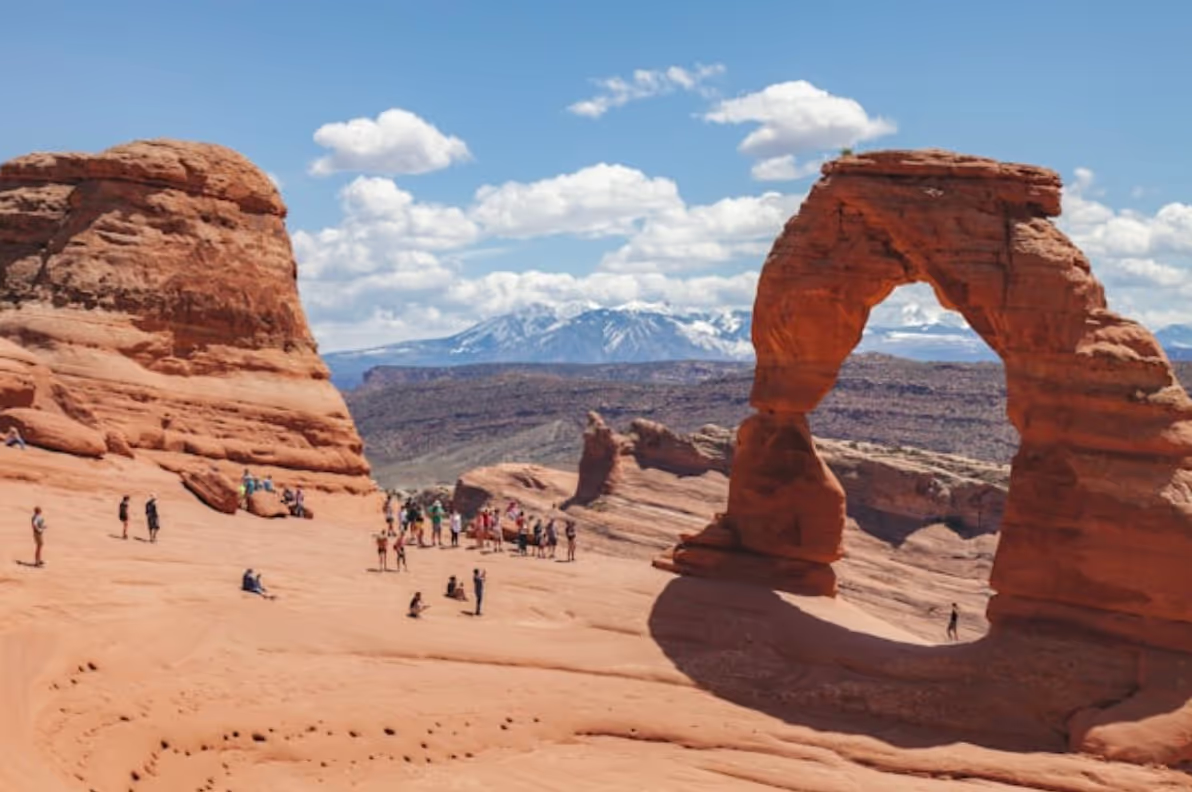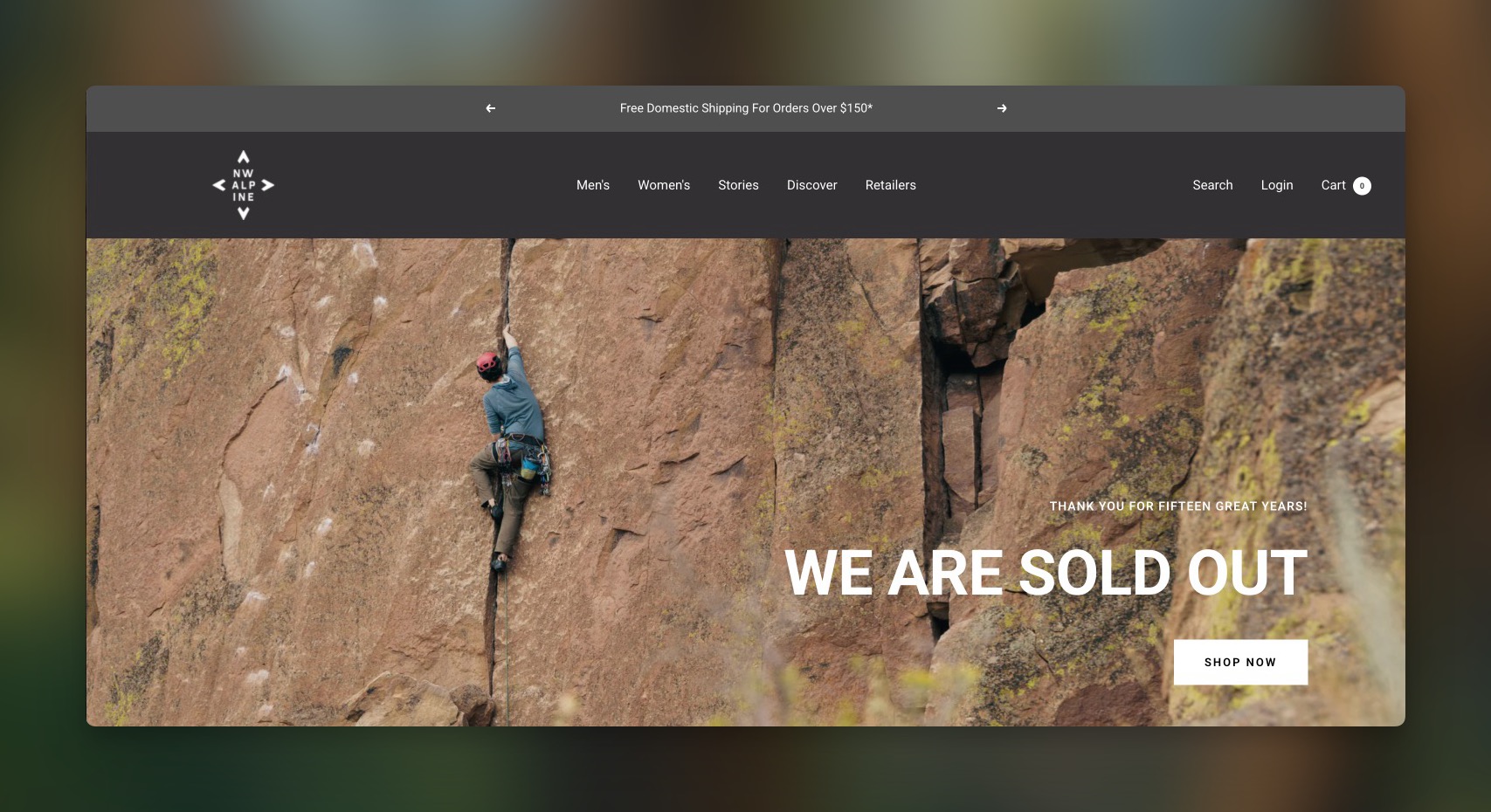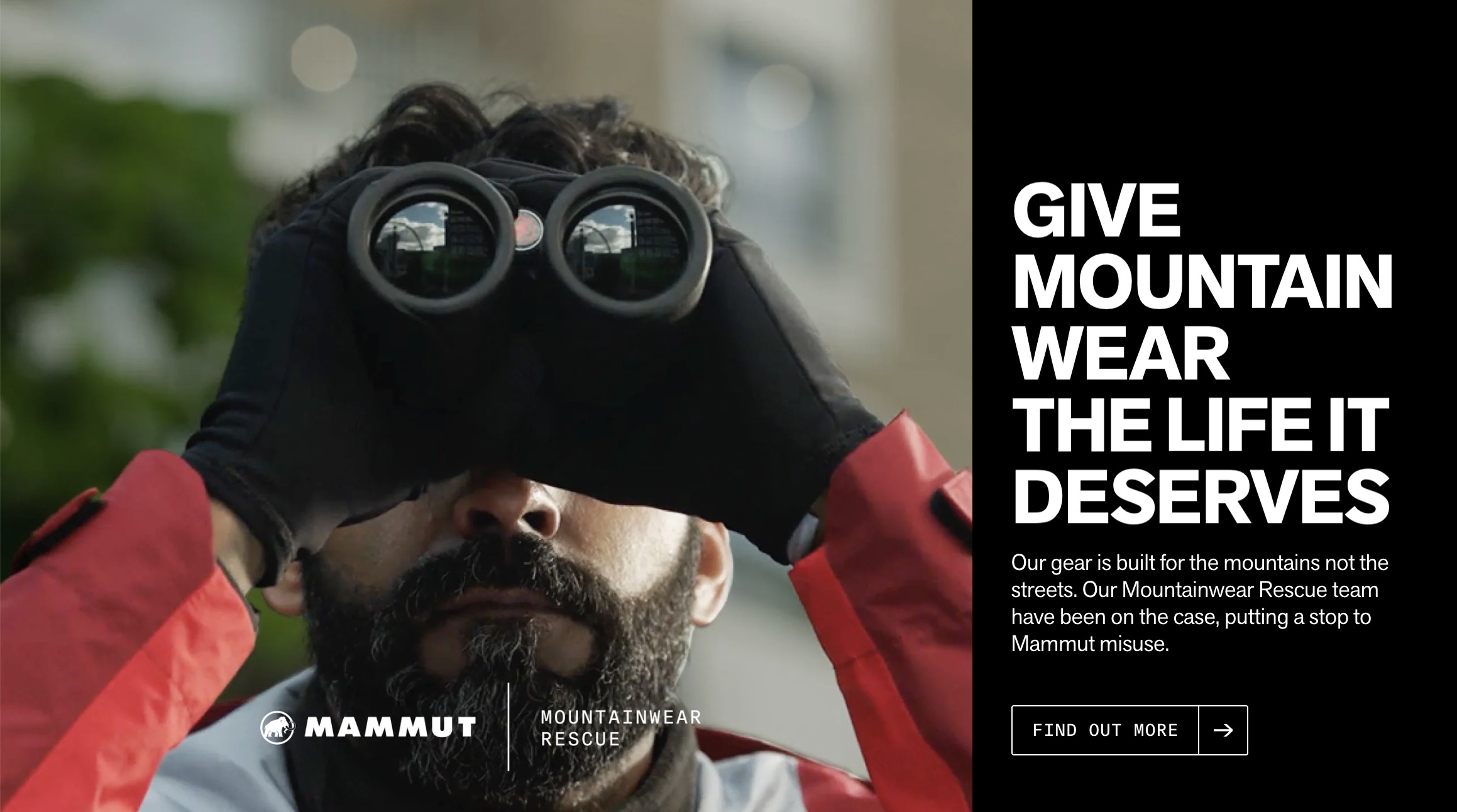It's no secret that I love digging into the data, and just recently the National Parks Service (NPS) released their Visitor Use Statistics for 2023. I started looking into these stats a few years ago and it’s been a great exercise in keeping up with broader tourism and visitation trends. The data addresses all elements of the NPS, but I’ll mostly focus on National Parks here.
Quick hits:
- There were 325.5 million recreation visits in calendar year 2023
- Recreation visitor hours were 1.4 billion – a 4% increase from 2022
- Broad trend is a return to “normal” visitation patterns and growth after a dip during COVID and subsequent major surge in 2021
- The top parks by visitation remain mostly the same (it doesn't fluctuate too much)

Dry Tortugas, Congaree, Joshua Tree, and Glacier Bay NP all set visitation records.
In Joshua Tree, “off-season visitation was up 12.8% between June 2023 to October 2023. Final visitation numbers for 2023 are 3,282,575 visits, an overall 7% increase over 2022, and another record-breaking year.” (NPS.gov). "Residents of the town of Joshua Tree near the existing entrance now endure long back-ups on their once-quiet side streets, and even curious visitors hiking through their yards." (Desert Sun)
Dry Tortugas is interesting because the other parks in Florida (Biscayne and Everglades) had pretty significant decreases (or corrections), depending on how you choose to view it.
One of the most interesting growth points is Glacier Bay. This 3.3 million acre park located southeast of Juneau, Alaska is only accessible by plane or boat. It set a record of over 700k visitors in 2023, with a 29% increase in visitation over 2022. I had to wonder…why? Turns out, this is likely tied to a post-covid surge in cruise bookings, particularly to Alaska.
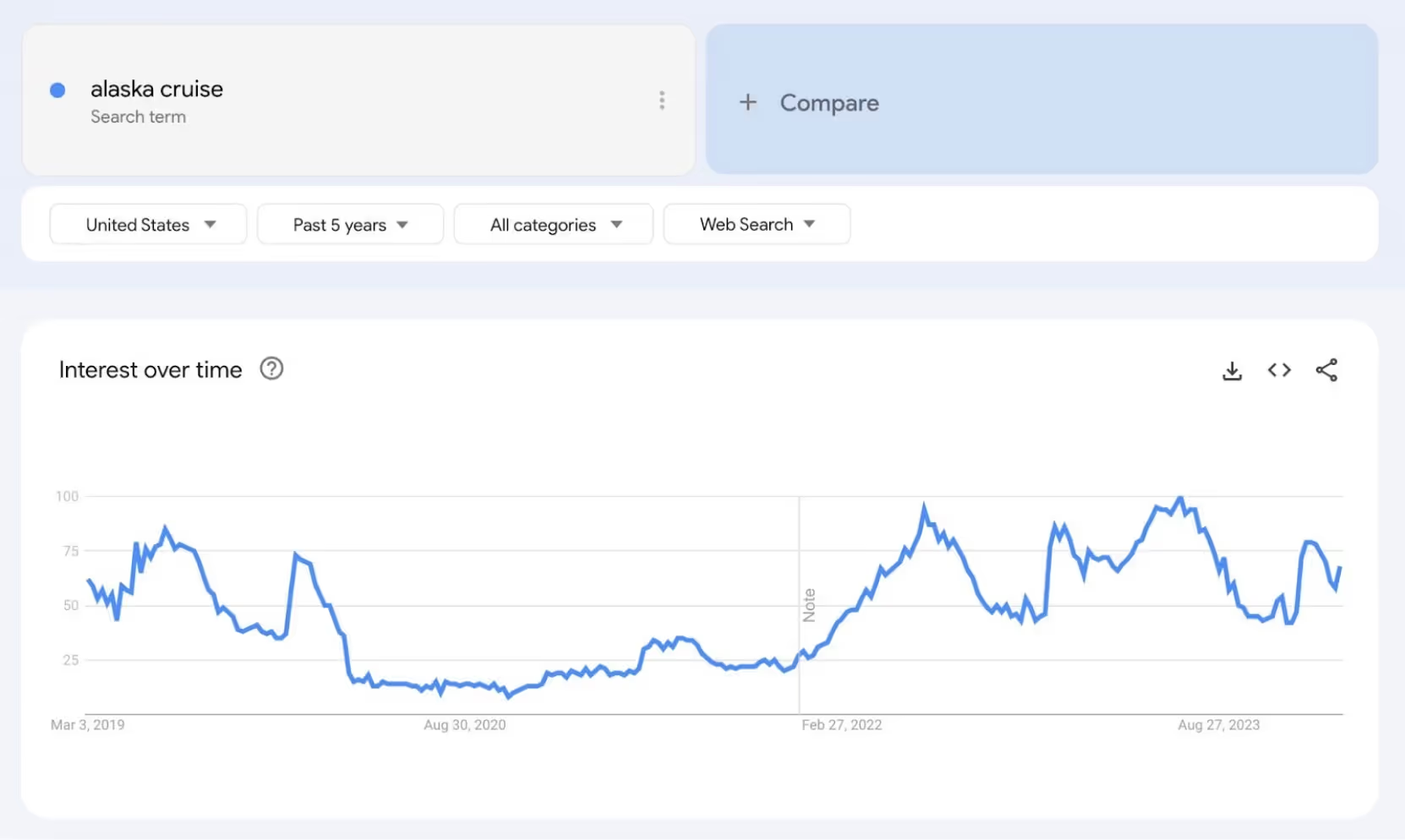
It seems that this is a trend likely to continue. Princess Cruise lines recently announced that January 2024 set a new record, “with an over 20% surge in Alaska bookings, the highest in the cruise line’s history for this period”. Particularly illustrative is the change in the beginning/end of season visits over the last few years (not that both 2020 and 2021 were affected by Covid restrictions)

Yellowstone, North Cascades, and Virgin Islands had big YOY increases
This is actually a bit misleading for Yellowstone. 2021 was a record visitation year and 2023 visitation levels returned to near that level (2nd all time) after major floods in 2022 resulted in extended park closures that negatively affected visitation. Grand Teton had a similar dip and bump for 2022/23 – these are popular parks to combine for road-tripping travelers that likely have a related effect.
North Cascades remains one of the quieter National Parks, but had one of the largest surges in visitation last year – a 33% increase from 30k visitors to just over 40k, a trend my Northwest-based mountaineering friends likely aren’t too excited to see developing.
Virgin Islands National Park occupies the majority of St. John, one of the U.S. Virgin Islands. The region has seen increased visitation in recent years due to increased marketing focus and flight capacity. Airline seat capacity from the continental US is up 21% in St Thomas.
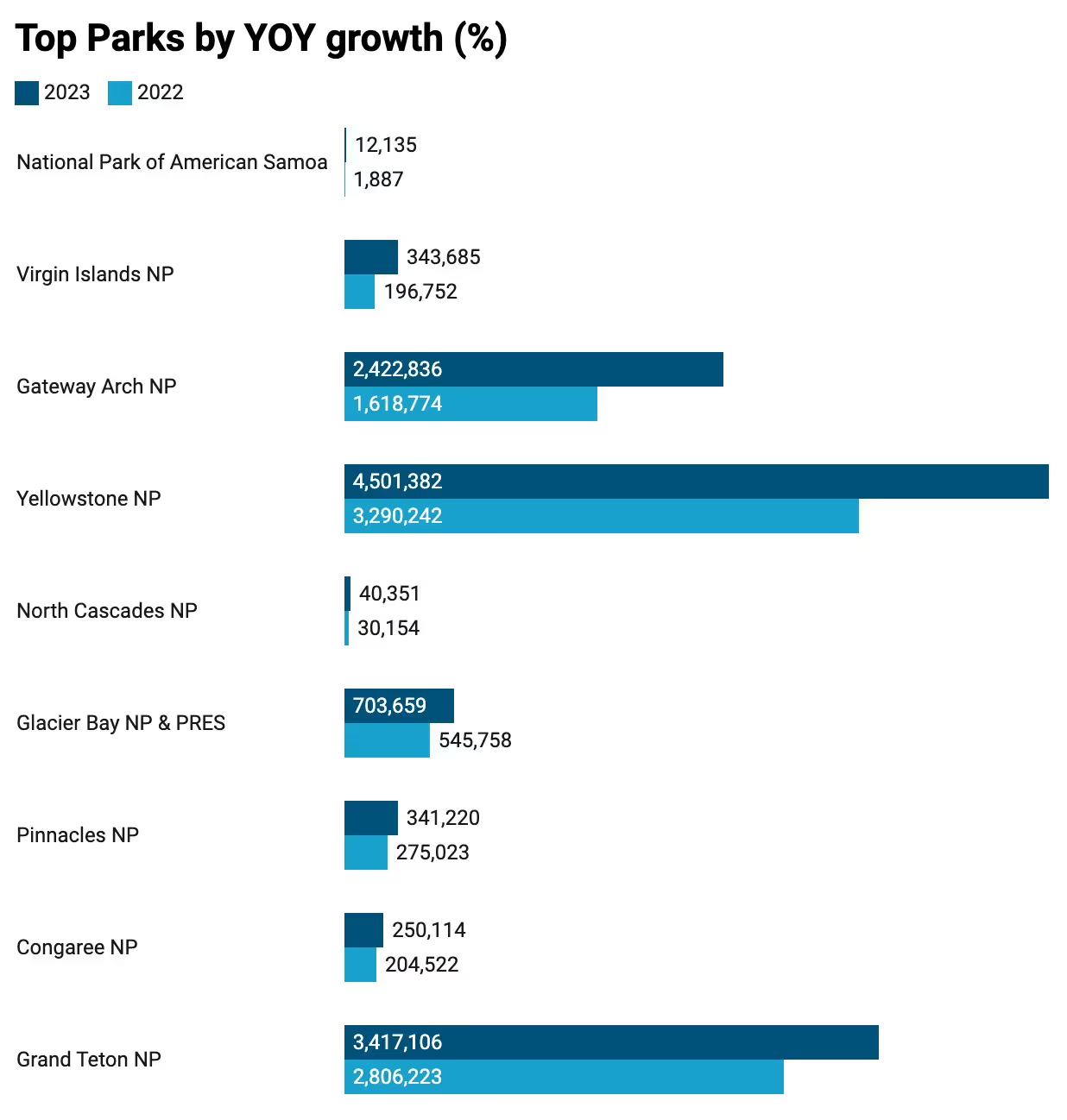
Permits seem to be doing their job, but not everyone is a fan
Following the growth in outdoor recreation following covid, many National Parks were overrun with visitors. As a method to manage visitation for the sanity of staff and to alleviate crowds and traffic, additional permits were put in place. While some visitors appreciate that these timed-entry permits bring an element of control over crowds, others lament an increasing lack of spontaneity for locals and challenges for international tourists.
At Arches NP, visitation has mostly plateaued over the last 2 years, at around 1.5M people a year. This is down from a record of 1.8 in 2021, and consistent visitation above 1.5M in the years before that. Not everyone is a fan – some local businesses in Moab say that entry permits are hurting their business.
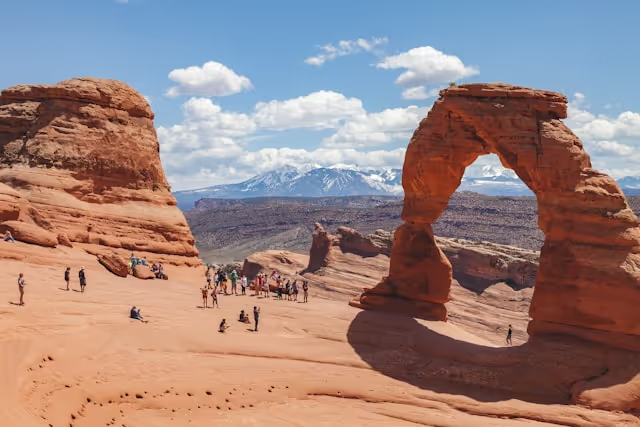
Visits to Rocky Mountain NP were down 4.3% from 2022, and at just over 4.1M visitors, it was their lowest year in the last eight (except for 2020). Changes to permitting for 2024 include moving the ‘day before’ availability to 7pm from 5pm, and only requiring permits until 2 p.m. rather than 3 p.m in non-Bear Lake areas.
Mount Rainier NP plans to pilot a timed-entry system at the Nisqually and Stevens Canyon entrances for the summer of 2024. Visitation at the park has risen 54% in the last ten years, from 1.1M in 2013 to over 1.6M visitors in 2023.
Yosemite flirted with entry permits following COVID. After trialing permits in 2021 and 22, and then removing the permit requirement in 2023, officials (and guests) felt the impact of additional visitation without permits as a governor. They plan to revisit entry permits for 2024. “Under next year’s “Peak Hours Plus” policy, every vehicle entering the park between 5 a.m. and 4 p.m. during reservation periods will be required to purchase one of two permits in advance: a full-day admission pass or an afternoon pass, which is valid at noon. Both passes are good for three days.” This policy plays in a middle ground for the park – consistently one of the most visited in the country, with 3.9M visits in 2023…still a far cry from the 2016 record (and insane crowds) of over 5M visitors.
What’s this all mean?
A lot of people are still going outside and recreating in our National Parks and broader public lands. A *lot* of people. And while there are only a few places enforcing timed-entry restrictions at the moment, there are more various types of permits now than ever before. And that’s likely to continue.
While this has effects on our ability to recreate exactly where we want to, when we want to, I’m hard pressed to see obvious alternative solutions to this problem. Limits on visiting Yosemite might be annoying, but imagine 1 million *more* people each year in the park (almost all in June – August), like there was in 2016. Without careful planning and management, it seems unlikely that Joshua Tree can continue to support 3.2 million people (and growing) each year. These places have varying 'carrying capacities' and they're becoming increasingly hard to manage.
And when it comes down to it, we’re not experiencing the crowds, we are the crowds.


